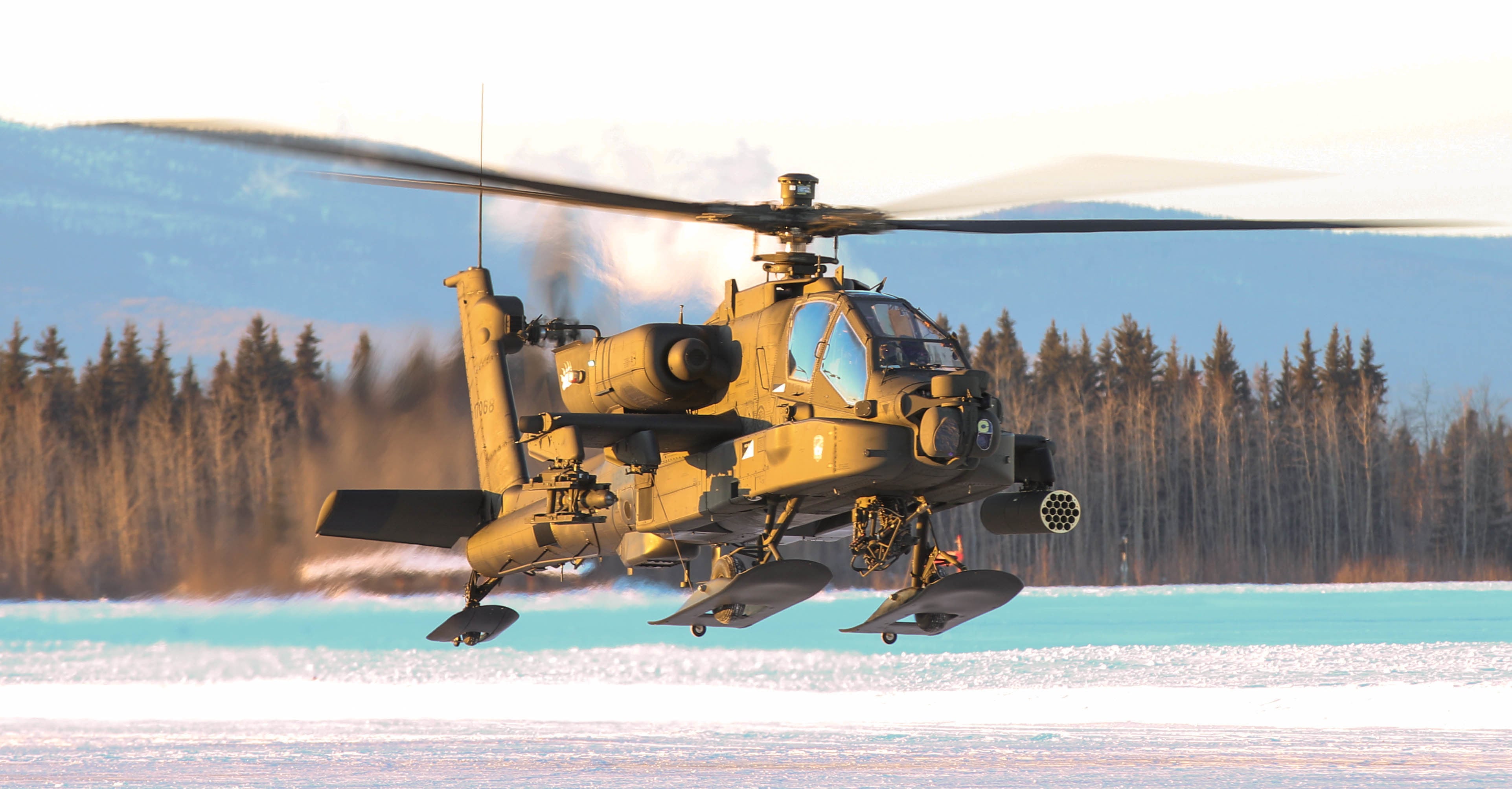As the Army builds its very first AH-64 Apache battalion in Alaska, soldiers in the unit are experiencing a lot of firsts.
The 1st Attack Reconnaissance Battalion, 25th Aviation Regiment, is the first Apache unit to permanently install skis on the bird. It also is the first to "cold-soak" the aircraft in temperatures as low as 20 degrees below zero for days at a time to see how the system reacts to such extreme cold. And the battalion is the first to look into fielding an external equipment pod to hold pilots' much-needed but bulky extreme cold-weather survival and mobility gear.
"We're just like any other attack battalion in the Army, and we can deploy anywhere in the world," said Lt. Col. Jaysen Yochim, the commander of 1st Battalion. "But the terrain and temperatures here are unique, and we're really up here to be part of the Army's subject matter experts on how you operate in the Arctic."
No other Apache unit has developed tactics, techniques and procedures for flying Apaches with skis or how to operate the helicopters in subzero temperatures, he said.
The battalion, based on Fort Wainwright, was stood up in September and has received 20 of its 24 Apache helicopters. The Apaches are assigned to U.S. Army Alaska's Aviation Task Force, which already has UH-60 Black Hawk and CH-47 Chinook helicopters.
This is the first time the Apache has been stationed in Alaska. Previously, an A-model Apache underwent testing at the Fort Greely Cold Region Test Center during the winter of 1991.
Stationing Apache helicopters in Alaska is part of the Army's sweeping five-year reorganization of its aviation assets. The Aviation Restructuring Initiative, among other things, eliminates the OH-58 Kiowa Warrior from the Army's inventory and uses Apaches to fill the Kiowa's reconnaissance and scout role.
The Apache is the Army's primary attack helicopter. The twin-engine, four-bladed, multi-mission aircraft was designed to fight close and deep to destroy, disrupt or delay enemy forces.
The Apache is manned by a two-person crew, and it can carry up to 16 Hellfire laser-designated missiles. It also can employ a 30mm M230 chain gun and Hydra 70 rockets, according to the Army.
Along with the Apaches, 1st Battalion also will receive Gray Eagle Unmanned Aerial Systems.
Since it was stood up in September, the soldiers of 1st Battalion are slowly coming together and learning their new environment, Yochim said.
"We've had some struggles from the start," he said, but the battalion has learned a lot from its first winter in Alaska.
Here's a look at some of the unique challenges the battalion has faced.
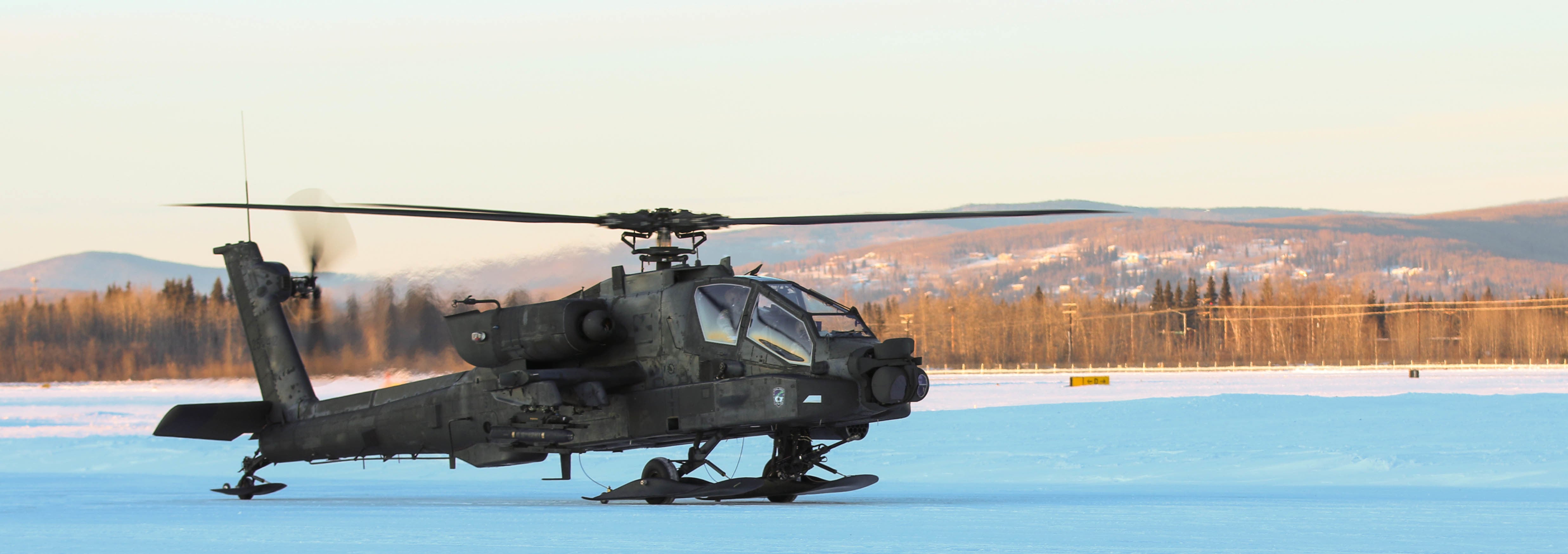
AH-64 Apache aviators from 1st Battalion, 25th Attack Reconnaissance Battalion, conduct pilot certification training Jan. 20, 2016, at Fort Wainwright, Alaska. The 1-25th ARB is in the process of certifying its aviators to validate the unit for potential future deployments in the Pacific and across the world.
Photo Credit: Staff Sgt. Sean Brady/Army
Skis and muskeg.
In Alaska, all of the Army's helicopters — not just the Apaches, but the Black Hawks and Chinooks, too — fly with skis, Yochim said.
"It's not so much for the snow, but for the muskeg," he said. "That's one of the misconceptions I had coming up here. Skiing in the lower 48, you'd think the skis were for snow and ice."
Instead, they're for muskeg, a swamp or bog made up of water and partly dead vegetation that's frequently covered by a layer of moss. Yochim described it as an Arctic swamp, adding that it usually becomes a problem when temperatures rise and the ground starts to melt.
"It's really wet, and it's really mushy," he said.
Landing on muskeg is like landing on a sponge, said Chief Warrant Officer 4 Michael Maine, the standardization instructor pilot for 1st Battalion.
"When we first got here, the [Black Hawk] battalion guys did our initial training, and they said it can go as far as 90 feet deep," Maine said about the muskeg.
The skis help distribute the helicopter's weight, giving pilots "some ability to land," he said. Otherwise, "once the aircraft lands on it, the aircraft becomes somewhat unstable, kind of like a boat."
Practically all of the battalion's training area has some amount of muskeg, so the aviators always fly, year round, with skis on their helicopters, Yochim said.
The skis, made by Airglas, Inc., are about 5 feet long and 3 feet wide. Each Apache needs three skis; they weigh about 400 pounds combined. The skis allow for the Apache's wheels to run down the center of them, giving aviators the option to also roll around with the skis on, Yochim said.
Transitioning to flying with skis has been relatively seamless, Maine said.
"We can't tell it's on there," he said. "Four hundred pounds for an Apache isn't that much weight, and the aerodynamics make it so it doesn't feel like they're on there."
Yochim agreed.
"I thought I would feel the difference when I was flying with the skis because of drag or the extra weight, but there's really no difference," he said.
The next step will be training to fight the Apache with skis on.
The battalion is going to test the gunnery in late March and into April, Maine said, as it works to develop tactics, techniques and procedures so the Apache's guns, when fired, don't hit the skis.
"The biggest thing is being able to shoot with the skis and land with the skis," he said. "That's really the biggest difference between what we do and the U.S. Army, period, when it comes to the Apache."
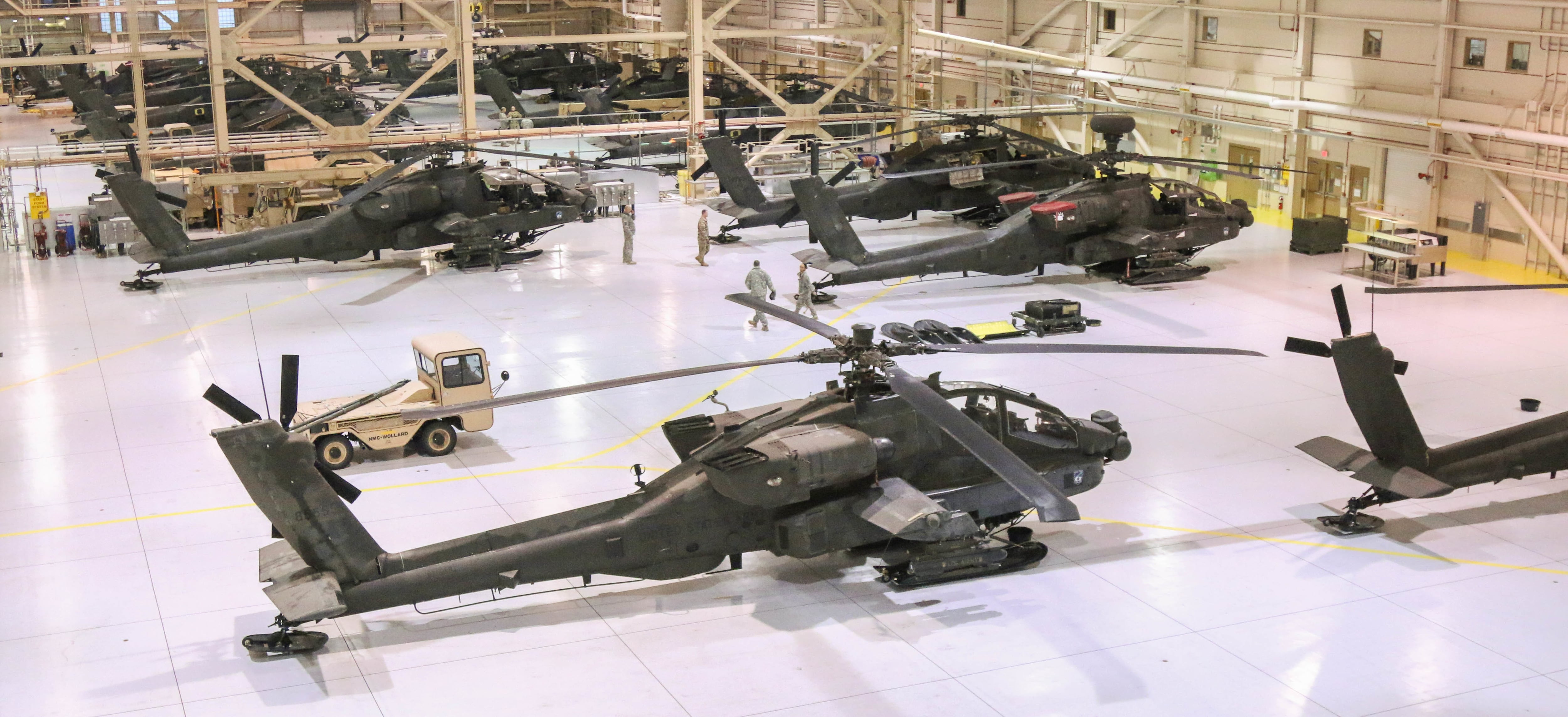
AH-64 Apache aviators from 1st Battalion, 25th Attack Reconnaissance Battalion, conduct pilot certification training Jan. 20, 2016, at Fort Wainwright, Alaska. The 1-25th ARB is in the process of certifying its aviators to validate the unit for potential future deployments in the Pacific and across the world.
Photo Credit: Staff Sgt. Sean Brady/Army
Extreme cold.
As winter set in, soldiers in 1st Battalion wanted to know how the Apache would respond to the cold weather.
"Our aircraft are generally kept in hangars, but with us being globally capable, we want to know, if we had to have an aircraft sitting outside in minus-20 temperatures, what would happen," Yochim said.
So the unit "cold-soaked" its Apaches. This meant leaving one outside in minus-10-degree weather and another in even colder 20-below temperatures, said CW3 Scott Quiros, the production control officer for the battalion.
"As you start the aircraft up, one thing you notice is everything kind of contracts, it gets smaller," he said.
The Apache's computers booted up more slowly, and the struts on the main landing gear started leaking, he said.
"Things just act differently up here in the Arctic," Yochim said.
Yochim and Quiros have both been stationed at Fort Drum, New York, but the cold in Alaska is different and more sustained, Yochim said.
"Everything on the Apache is made for more temperate climates," he said. "It's made more for the lower 48, so a lot of what we're doing is we collect data, we feed that back to the engineers at Redstone [Arsenal] so they can make some determinations."
The aviators in 1st Battalion have gotten tips and advice from their Black Hawk and Chinook counterparts, Quiros said, but the Apache has more electronics and computers than either of the other two helicopters.
The Apaches also have weapons systems that run off hydraulic fluids, he said.
Another test the battalion ran this winter was how long it would take to warm up an Apache that had been sitting out in the cold.
"When it was cold-soaked and we turned on the auxiliary power unit, it was three hours [of warming up] to really do anything," Quiros said. "The Chinook has a warming system to warm up the aircraft. We really don't have that built in to the Apache. It's one of those challenges that we didn't think about coming up here."
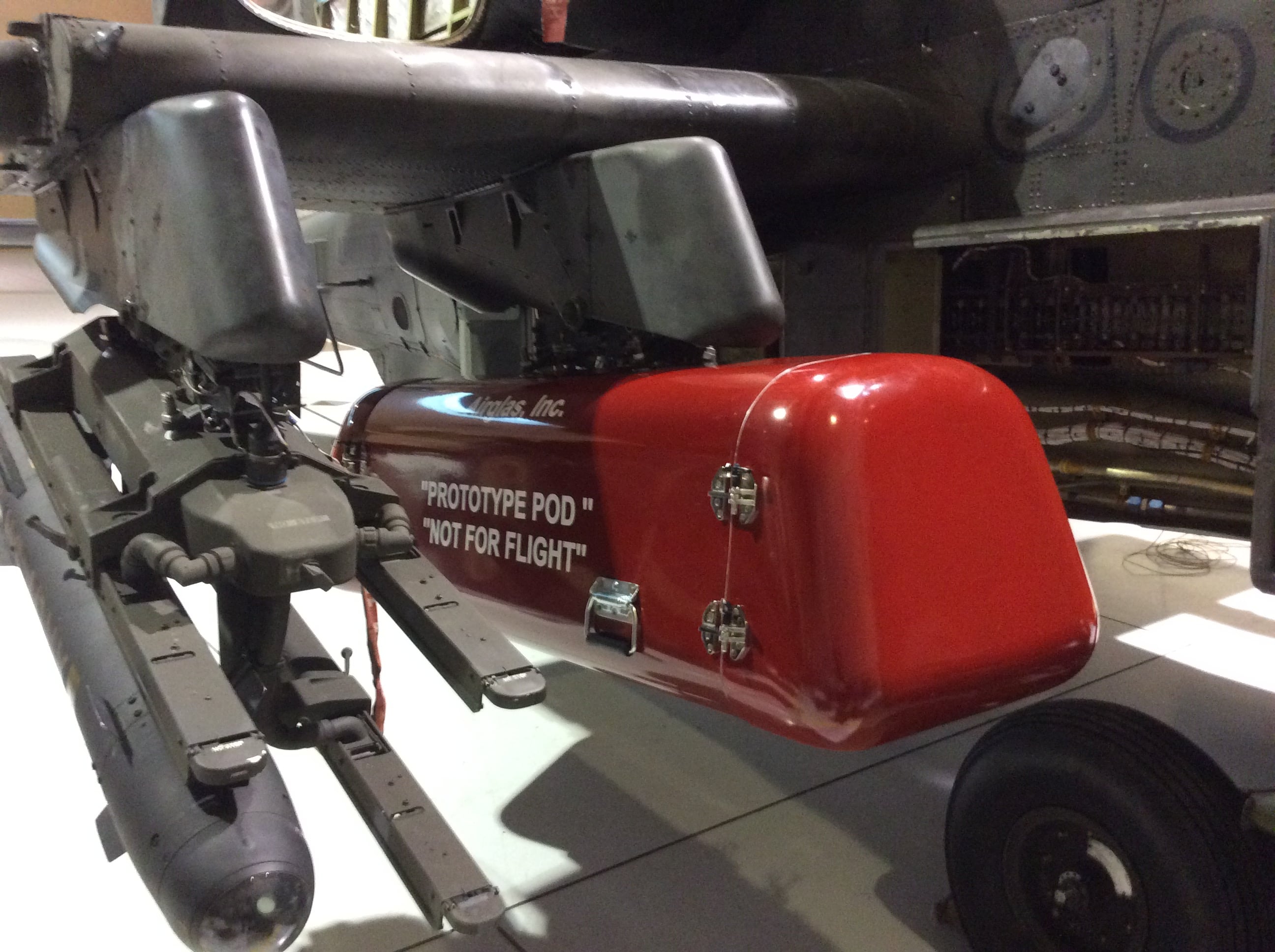
prototype pod
Photo Credit: Army
Tight spaces.
With just 7 cubic feet of space in the Apache, the battalion is exploring different options for ways to store the critical survival gear crews need to fight and in case of emergency.
"In the back of the Apache we have a small survival bay, but we run into issues because we have so much gear," Maine said.
In addition to cold-weather survival gear, which include sleeping bags, a tent, extreme cold-weather clothing and boots, the aviators also need to carry their combat equipment, Yochim said.
"When any of us has deployed to Afghanistan, we would fly around with an extra box of MREs and our body armor and Kevlar helmets," he said. "So if we did have to put our aircraft down somewhere, we'd have all we need to be a soldier."
One option the soldiers are exploring is an external pod that would mount under one of the Apache's wings.
Without the external pod, "we don't have the ability to carry our combat equipment," Yochim said. "We can carry our survival kit for the Arctic, but just barely, so if we're really learning how to fight the Apache in the Arctic, we need some extra storage capacity."
Right now, the pod is still a prototype, but it is built by Airglas, the same company that makes the helicopters' skis.
It gives the Apache an additional 13 cubic feet of space, and it can be detached and used as a sled.
Each pod is estimated to cost $5,000 to $7,000.
Because testing and developing the pod for potential use will cost money and take time, the Army also is looking at other options to help lighten the load on Apache crews, Yochim said. This includes possibly streamlining and custom-tailoring the existing survival kits.
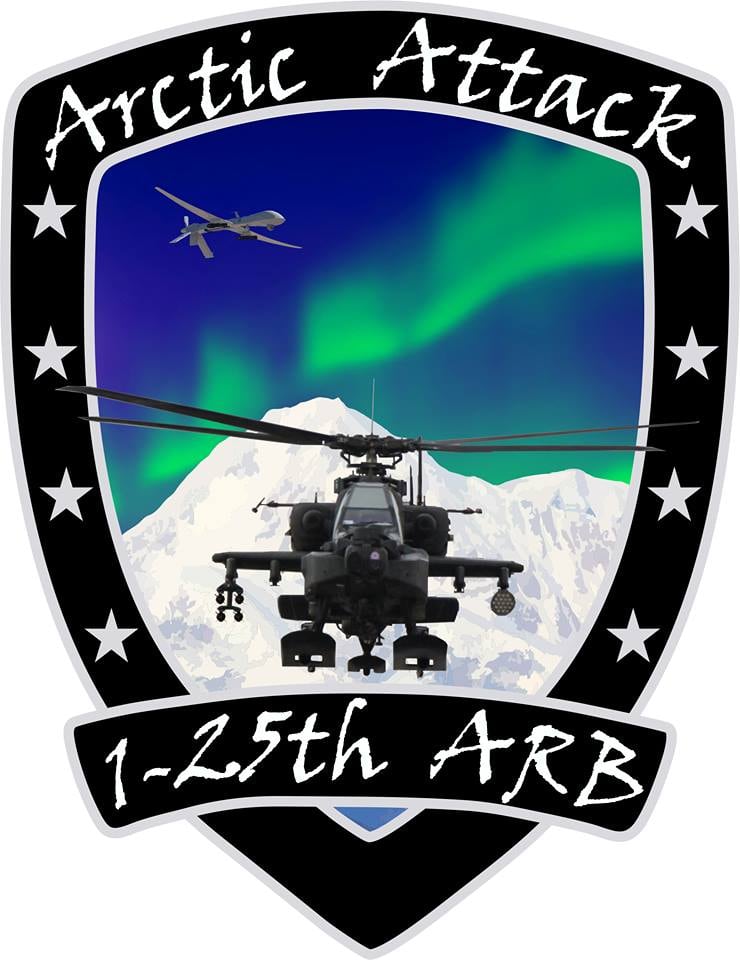
The 1st Attack Reconnaissance Battalion, 25th Aviation Regiment is the first AH-64 Apache battalion to be stationed in Alaska.
Photo Credit: Army
Location, location, location.
Logistics remains a challenge for the battalion.
"It takes a lot longer to get our parts up here because it's not a very mature logistical system here yet for the Apache," Yochim said. "Once it matures, it's going to be fine."
The delays are a natural part of standing up a new unit, he said.
"Everything takes a while, but we're working through our issues," Quiros said.
Michelle Tan is the editor of Army Times and Air Force Times. She has covered the military for Military Times since 2005, and has embedded with U.S. troops in Iraq, Afghanistan, Kuwait, Haiti, Gabon and the Horn of Africa.
